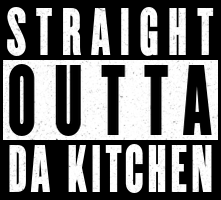
Mastering Spin in Pickleball
Share
Spin: Types, Techniques, and Drills for a Winning Edge
Pickleball is a fast-growing sport that combines elements of tennis, badminton, and ping-pong, but one factor can set you apart from the competition: spin. Learning to include spin on your pickleball shots can enhance control, add deception, and make your game more dynamic. In this blog post, we’ll cover the types of spin, when to use them, proper grips, and effective drills to practice.
Types of Spin in Pickleball
1. Topspin
What it is: A topspin shot makes the ball rotate forward, causing it to dip quickly after clearing the net.
When to use it: Topspin is ideal for aggressive shots like drives and passing shots. It allows the ball to travel with a higher margin of safety over the net but then drop sharply, making it harder for your opponent to react.
2. Backspin (Underspin)
What it is: Backspin causes the ball to rotate backward, which makes it float slightly longer and bounce lower upon landing.
When to use it: Use backspin for dinks, drop shots, and soft volleys. This spin slows the ball down, making it harder for your opponent to handle aggressive shots.
3. Sidespin
What it is: Sidespin causes the ball to curve left or right in the air, throwing off your opponent’s positioning and timing.
When to use it: Sidespin can be especially useful during serves and cross-court shots. It helps create angles that pull your opponent out of position.
Grips for Spin
1. Topspin Grip
- Use an Eastern Grip or Semi-Western Grip for topspin. These grips allow you to brush up on the ball, creating the forward rotation needed for topspin.
- To achieve the Eastern Grip, place the base knuckle of your index finger on the third bevel of your pickleball paddle. This position provides a balance between control and power, allowing you to generate spin with minimal effort.
2. Backspin Grip
- For backspin, use a Continental Grip (sometimes called a "hammer grip"). This grip is great for slicing under the ball, allowing you to apply backspin.
- To get the Continental Grip, hold the pickleball paddle like you’re shaking hands with it, with your index knuckle resting on the second bevel. It’s also the go-to grip for volleys and serves.
3. Sidespin Grip
- Sidespin can be achieved with variations of the Continental or Eastern grip, depending on the desired direction of the spin.
- Adjust your wrist position slightly to brush the side of the ball at contact. For example, if you want to curve the ball to the right, angle your paddle to the right while brushing the outside of the ball.
Check out our blog post Mastering Pickleball a Guide to Different Paddle Grips for additional discussion on various grips to use to elevate your pickleball game.
When to Use Spin in Pickleball
During the Serve: A topspin or sidespin serve can put your opponent on the defensive right away, making it hard for them to execute an aggressive return.
In Cross-Court Rallies: Use sidespin or topspin in cross-court rallies to force your opponent out wide and open up the pickleball court for a winning shot.
At the Net: Backspin is effective for soft dinks and drop shots that keep the ball low and difficult to attack. It also works well in defensive situations, giving you time to reset the rally.
Passing Shots: Topspin helps with aggressive passing shots, allowing you to hit the ball hard while still keeping it in play.
Drills to Practice Spin
1. Topspin Forehand Drill
- Set up at the baseline and rally with a partner or use a ball machine. Focus on brushing up on the ball with your forehand to create topspin. As you hit, aim for deep cross-court shots that land close to the baseline. Practice keeping the ball high over the net but dipping just inside the court.
Goal: Achieve a consistent topspin stroke with depth and control.
2. Backspin Dink Drill
- Stand at the kitchen line and practice soft dinks with backspin. Focus on slicing under the ball, keeping it low and controlled. Rally with a partner, exchanging slow, spin-heavy dinks to improve your control over backspin.
Goal: Keep your backspin dinks low to make them harder for your opponent to attack.
3. Sidespin Serve Drill
- Practice serving with sidespin by brushing the side of the ball at contact. Aim for different zones of the service box, paying attention to how the ball curves through the air. This will help you develop accuracy and consistency with your sidespin serves.
Goal: Improve the placement and effectiveness of your sidespin serves.
4. Spin Variation Rally
- During a rally with a partner, alternate between topspin, backspin, and sidespin shots. This drill will improve your ability to mix up spins in different situations and make your game less predictable.
Goal: Build comfort with using various spins interchangeably during live play.
Final Tips for Adding Spin to Your Game
Brush, Don’t Hit: Spin is created by brushing up, under, or to the side of the ball, not by hitting it flat. Focus on creating a glancing blow with the paddle to generate more spin.
Footwork is Key: Proper positioning and balance are crucial for executing spin shots. Make sure your feet are set, and you’re in the right position before attempting to apply spin.
Practice Consistently: Spin shots take time and muscle memory to master, so make these drills part of your regular routine.
Adding spin to your pickleball game is a fantastic way to outmaneuver your opponents and gain control of the pace of play. With the right grips, shot selection, and practice drills, you’ll be spinning your way to victory in no time.
Looking for the best pickleball gear? Check out our Straight Outta Da Kitchen Shop for top-rated apparel and accessories to elevate your game!
